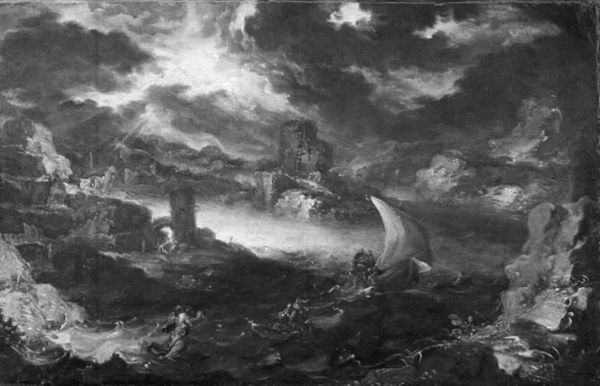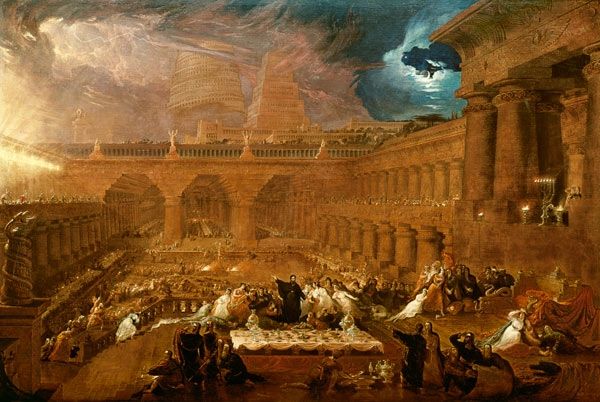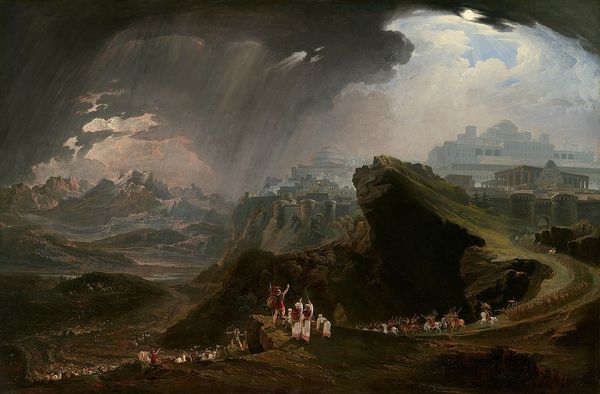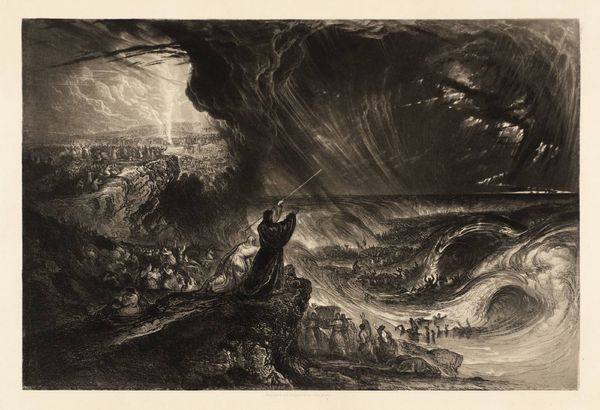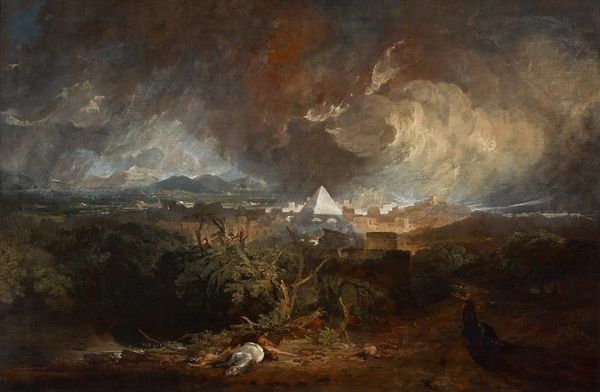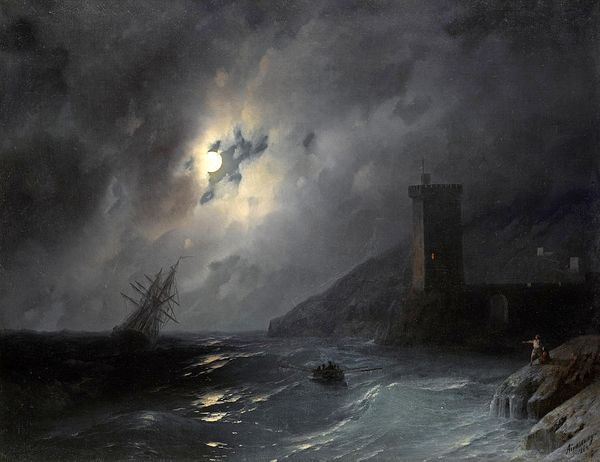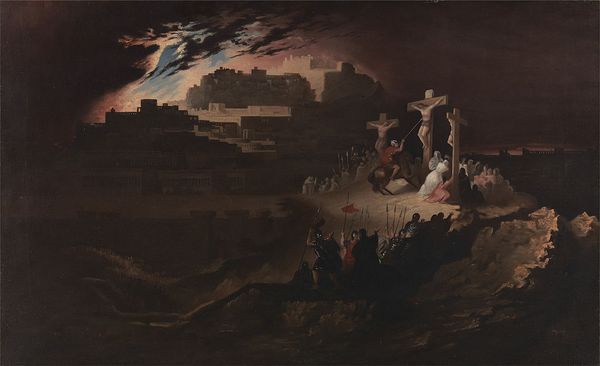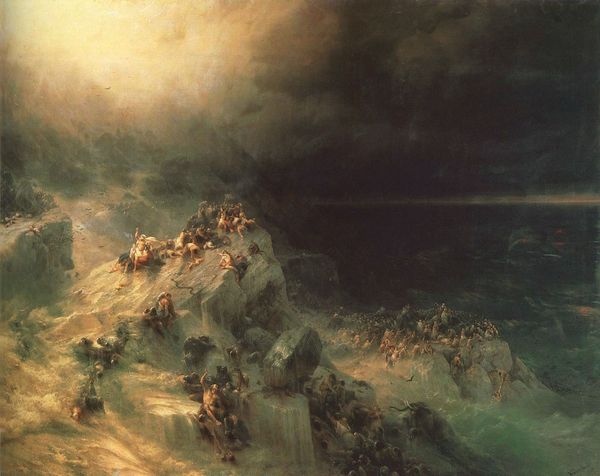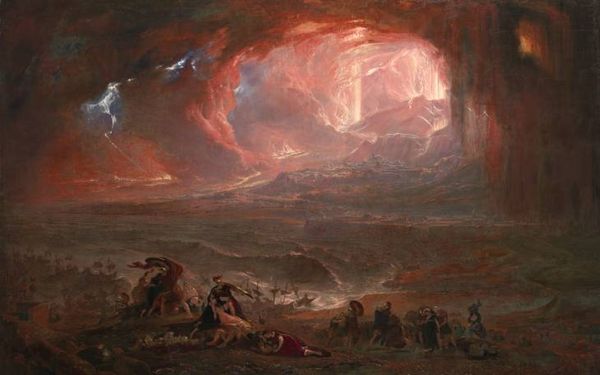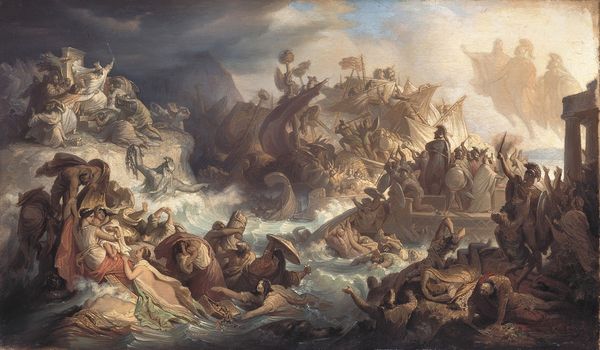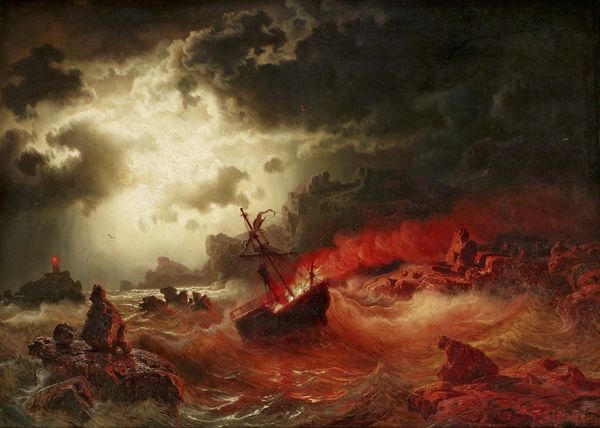
painting, oil-paint
#
narrative-art
#
fantasy art
#
painting
#
oil-paint
#
landscape
#
fantasy-art
#
romanticism
#
history-painting
#
environment sketch
Copyright: Public domain
Editor: Here we have John Martin's "The Seventh Plague," an oil painting completed in 1823. It's quite overwhelming. The scale feels immense, and the depiction of the storm is so dramatic. What's your take on this piece? Curator: It's fascinating to consider the socio-economic context that allowed for the production of something so monumental. Martin, working in 19th-century England, was dependent on particular systems of patronage, pigment production, and labor. Think about where the oil paints came from, how they were processed, and who was involved in their making. And the canvas itself. Editor: That’s a side I haven’t considered. So, thinking about the canvas, its size… that would mean specific workshops capable of producing such large-scale supports? Curator: Exactly. Also, how does this relate to the rise of industrialization and the availability of these materials? The ability to mass produce materials – how does that influence artists' capacity to work at this scale, and how might the subject matter relate to this evolving industrialized landscape? The plague itself - consider its raw materials: contaminated water, unburied bodies. The relationship between this "natural" disaster and the emerging concerns around urban sanitation, class inequality, and resource management within the painting’s society. Editor: I see, it’s not just a dramatic depiction of a biblical event, but also reflective of contemporary societal anxieties related to production, consumption, and waste. Curator: Precisely! The grandiosity becomes a commentary. Considering the societal landscape of this artwork makes you realize the process, and material context, gives it a new perspective. Editor: Wow, it completely reframes how I see it.
Comments
No comments
Be the first to comment and join the conversation on the ultimate creative platform.
